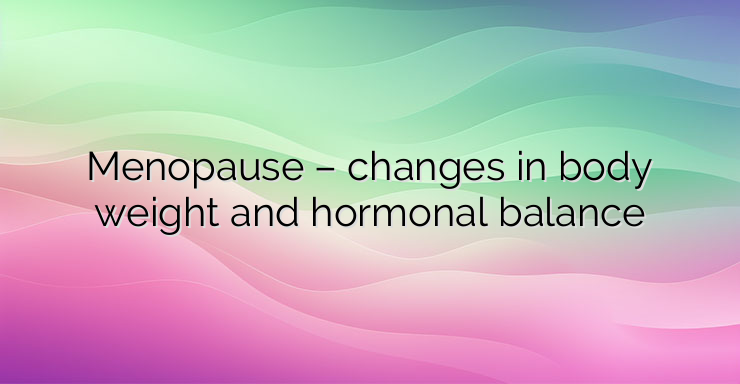During menopause, various changes in the hormonal balance are observed. The most significant is the decrease in serum concentrations of circulating estrogen, which leads to some physiological changes such as genital atrophy and loss of bone density. These changes are promoted by a significant decrease in the levels of estradiol – E2 and estrone – E1. Estrone continues to be produced by peripheral aromatization while the levels of estradiol produced by the ovaries decline. However, the ovaries continue to produce androstenedione and testosterone. This, together with a decrease in the levels of sex hormone-binding globulin – SHBG, leads to higher levels of free androgens – male sex hormones. Decreased serum concentrations of this globulin are associated with a higher prevalence of type 2 diabetes and cardiovascular disease in postmenopausal women. Low levels of SHBG and increased central adiposity are risk factors for the development of metabolic diseases. In menopausal women, there is an increase in total cholesterol, which is due to an increase in the levels of “bad” LDL cholesterol. During menopause, levels of “good” HDL cholesterol also decrease. These changes lead to increased cardiovascular risk in postmenopausal women. An increase in total body weight is also observed during this period. It has been found that during menopause, weight increases by an average of 1 kilogram per year. This general increase in body weight has not been shown to be directly related to changes in hormonal balance, but it appears to be related to advancing age, which results in decreased energy expenditure. Menopause is associated with increased deposition of subcutaneous and visceral fat in the abdominal area. In premenopausal women, estrogens are associated with the accumulation of subcutaneous fat in the gluteal and thigh areas. This female type of fat accumulation is associated with positive cardiometabolic effects and reduced insulin resistance. Androgens, on the contrary, are responsible for the accumulation of subcutaneous fat in the abdominal area, which leads to metabolically unfavorable consequences. This type of central obesity is associated with an increased risk of cardiovascular and metabolic diseases, as well as reduced physical activity and poorer quality of life. During menopause, there is an increase in the levels of the follicle-stimulating hormone – FSH and a decrease in the serum concentrations of circulating estradiol. Androgen levels remain unchanged, resulting in relative hyperandrogenemia. The decrease in sex hormone-binding globulin synthesis during the menopausal transition also increases androgen levels. This leads to a change in body composition, which is characterized by a male type of fat distribution, with adipose tissue accumulating mostly in the abdominal area. An increase in total visceral adipose tissue was also observed. It has been proventhat the relationship between estrogens and central adiposity in postmenopausal women is bidirectional, suggesting that increased central adiposity may also lead to increased estrogen levels. This is due to the production of estrogens through the peripheral conversion of androgens in adipose tissue – a process of aromatization. Obese postmenopausal women have been shown to have higher estrogen levels than those of normal weight. However, these estrogens obtained through peripheral aromatization have not been found to be associated with positive cardiometabolic effects such as lowering the risk of developing diabetes, cardiovascular disease, and insulin resistance. References: https://www.ncbi.nlm.nih.gov/pmc/articles/PMC8569454/ https://www.ncbi.nlm.nih.gov/pmc/articles/PMC8373626/


Leave a Reply